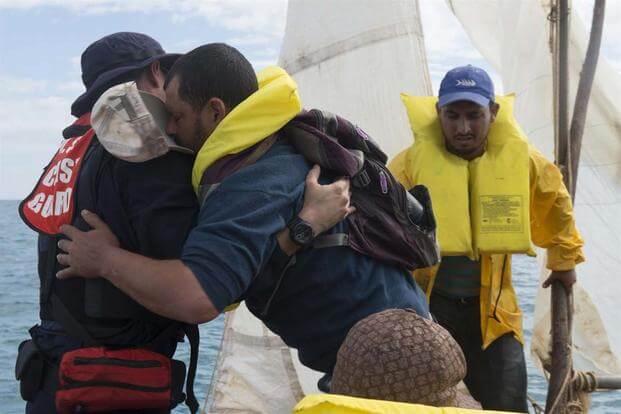After seeing the number of Cubans trying to reach the United States by sea skyrocket in 2016 as the two countries resumed diplomatic relations, the commandant of the Coast Guard said the flow has slowed to a trickle in recent months, thanks to the closing of a key policy loophole.
In 2016, the Coast Guard stopped an average of 100 Cuban migrants to the U.S. every day, with more than 100,000 interdictions for the year, Adm. Paul Zukunft told reporters in Washington, D.C. on Wednesday.
With that surge, the largest in at least a decade, came dangers, he said. Many of the migrants who made the short journey from Cuba to the Florida coast in barely seaworthy boats sought to take advantage of Cuba's unique "wet foot, dry foot," agreement with the U.S., and were willing to go to extremes to do so, he said.
The policy, in place since 1995, stated that Cubans who made it onto U.S. soil would be parolled into the states rather than deported, putting pressure on migrants to meet that requirement by any means necessary.
"We're talking self-mutilation, self-inflicted gunshot wounds, very desperate measures so they would be evacuated to a hospital in the United States and then be declared feet dry," Zukunft said. "We would have interdictions where they would threaten to drown a baby if we were to stop them."
On Jan. 12, days before leaving office, then-President Barack Obama ended the policy, saying the move reflected normalized relations with Cuba and would allow Cuban migrants to receive the same treatment as those from any other nation.
The effect was immediate, Zukunft said. Since the policy ended, he said, the Coast Guard has apprehended fewer than 100 Cuban migrants in total.
"The flow has stopped," he said.
Coast Guard officials are now keeping a wary eye on alternate routes and more sophisticated smuggling methods, he said. But so far, he said, conditions appear quiet. If they remain so, Zukunft said, the Coast Guard may be able to redirect some of the assets it used to apprehend Cuban migrants -- five to six ships -- to its drug interdiction mission.
In his State of the Coast Guard address in March, Zukunft said there were 580 drug-smuggling events that the service was aware of but unable to stop, due to tight resources and incomplete information.
"Maybe I can close that window a little bit more if we don't have to do as much migrant interdiction on the high seas," he said.
But just as Obama's 2014 decision to resume diplomatic relations with Cuba spurred a significant increase of new migrants via water, Zukunft worries that another action promised by President Donald Trump could once again push migrants to sea routes.
A terrestrial wall along the southwest border of the United States -- a proposal on which Trump campaigned and on which the White House is already soliciting contracting proposals -- could increase sea traffic of migrants, demanding more scarce Coast Guard resources.
"If you build a wall, a terrestrial wall, I think that will make the maritime domain even more appealing," Zukunft said. "We haven't seen that shift yet, but it's one we're keeping a close eye on."
-- Hope Hodge Seck can be reached at hope.seck@military.com. Follow her on Twitter at @HopeSeck.






























